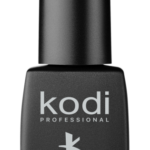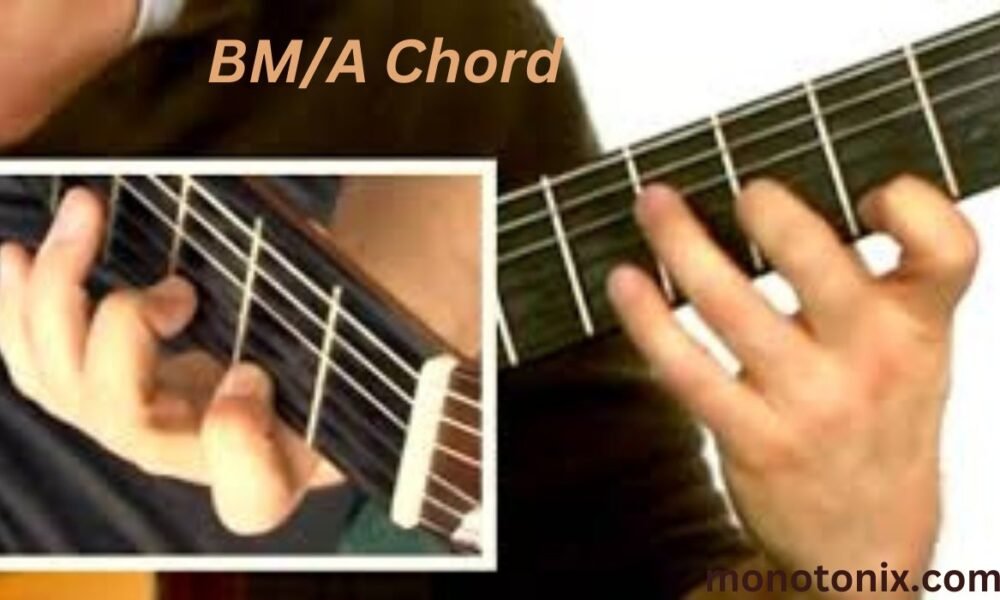Introduction
Learning to play the guitar can be an exciting journey, but it can also be overwhelming. As you progress, you’ll encounter a variety of chords, each with its own unique sound and finger positioning. One of the chords that often confuses guitarists, especially beginners, is the BM/A chord. This chord is not just a simple major or minor chord; it’s a bit more complex and brings a distinct flavor to the music.
In this article, we’ll dive deep into the BM/A chord, explaining what it is, how to play it, and how to incorporate it into your music. We’ll also explore its theory, variations, and common uses in different genres. By the end of this guide, you’ll have a solid understanding of the BM/A chord and be able to use it confidently in your guitar playing.
What is the BM/A Chord?
Breaking Down the BM/A Chord
The BM/A chord is known as a “slash chord” or “compound chord.” This means it combines two different chords into one. Specifically, the BM/A chord is a B minor chord with an A as the bass note.
- B Minor (BM) Chord: The B minor chord is made up of three notes: B, D, and F#. It’s a minor chord, which gives it a sad or melancholic sound.
- A (Bass) Note: In the BM/A chord, the bass note is A. This means that instead of playing the B note as the lowest pitch in the chord, you play the A note.
When these elements are combined, the BM/A chord has a richer, more complex sound compared to a standard B minor chord.
Music Theory Behind BM/A
To understand the BM/A chord fully, it’s helpful to dive into a bit of music theory. The B minor chord is built on the root (B), minor third (D), and perfect fifth (F#). When we add an A note as the bass, it changes the overall sound and function of the chord. This new note (A) is the 7th degree of the B minor scale, and when placed in the bass, it creates a tension that resolves nicely to other chords.
The chord symbol BM/A indicates that you should play a B minor chord with an A in the bass, resulting in a B minor 7th chord in first inversion. This inversion can create a sense of movement in the harmony, leading smoothly to other chords in a progression.
How to Play the BM/A Chord on Guitar
Finger Placement
Playing the BM/A chord on the guitar can be a bit challenging at first, especially if you’re new to slash chords or fingerstyle playing. Here’s a step-by-step guide to help you master it:
- Index Finger (1st Finger): Place your index finger across all six strings on the 2nd fret, barring them. This is known as a “barre” and forms the foundation for many chords, including BM.
- Middle Finger (2nd Finger): Place your middle finger on the 3rd fret of the B string (2nd string from the bottom).
- Ring Finger (3rd Finger): Place your ring finger on the 4th fret of the D string (4th string from the bottom).
- Little Finger (4th Finger): Place your pinky finger on the 4th fret of the G string (3rd string from the bottom).
- Play the A (Open String): For the A bass note, you need to play the open A string (5th string from the bottom).
When strumming, make sure you avoid hitting the low E string (6th string). Focus on strumming from the A string downward.
Common Mistakes to Avoid
- Inadequate Pressure: Applying insufficient pressure with your index finger when barring can cause the chord to sound muted or buzzy. Ensure you press down hard enough to get a clear sound.
- Incorrect Finger Positioning: Make sure your fingers are positioned just behind the frets, not on top of them, to avoid buzzing.
- Overstrumming: Avoid strumming the low E string, as it doesn’t belong in the BM/A chord and can muddy the sound.
Practice Tips
- Start Slowly: Begin by practicing the chord slowly, ensuring each note rings out clearly.
- Use a Metronome: Gradually increase your speed with a metronome as you become more comfortable.
- Chord Transitions: Practice moving from the BM/A chord to other chords in common progressions, like G, D, or A.
Variations and Voicings of the BM/A Chord
Exploring Different Voicings
The BM/A chord can be played in different positions on the guitar neck, offering various voicings that can add diversity to your playing. Here are a few common variations:
- Open Position BM/A: Instead of barring, you can play a simpler version using open strings. For instance, place your index finger on the 2nd fret of the G string and strum from the A string downward, leaving the other strings open.
- Higher Octave BM/A: Move the chord shape up the neck to create a higher-pitched version of the BM/A chord. For example, you can play it starting from the 7th fret.
- Fingerstyle BM/A: Incorporate fingerpicking to emphasize the A bass note while gently playing the higher B, D, and F# notes.
Using a Capo
A capo can also be used to create different voicings of the BM/A chord without changing the key of the song. For instance, place the capo on the 2nd fret and use an Am chord shape to create a BM/A sound.
Power Chords and Simplified Versions
If you find the BM/A chord too difficult, you can start with a power chord version, which simplifies the chord to just the B and F# notes with the A bass. This version is often used in rock and pop music to give a more aggressive sound.
Incorporating BM/A into Chord Progressions
Common Progressions
The BM/A chord is versatile and can be used in various chord progressions to create different moods. Here are some examples:
- BM/A – G – D – A: This is a common progression in pop and rock music, creating a smooth and melodic flow.
- BM/A – Em – G – A: This progression adds a bit of darkness and tension, often used in ballads.
- BM/A – C – G – D: This progression has a folk-like quality, ideal for acoustic songs.
Using BM/A in Songwriting
Songwriters often use the BM/A chord to add depth and complexity to their compositions. It’s particularly effective in the following situations:
- Transition Chord: The BM/A chord works well as a transition chord, bridging the gap between more stable chords and creating a sense of movement.
- Emotional Intensity: The minor quality of the BM chord, combined with the tension from the A bass, can add emotional intensity to your music.
- Creating Ambiguity: The BM/A chord can create a sense of ambiguity, making the listener unsure whether the song is major or minor, which can be used to great effect in certain genres.
Examples in Popular Music
Many popular songs use the BM/A chord or similar slash chords to achieve a unique sound. Here are a few examples:
- “Wonderwall” by Oasis: This song uses a similar chord progression, creating a mix of tension and resolution that defines its sound.
- “Hotel California” by The Eagles: This classic track features intricate chord progressions that include slash chords like BM/A to create its iconic sound.
- “Something” by The Beatles: George Harrison’s use of slash chords adds depth and sophistication to the song’s harmonic structure.
BM/A in Different Genres
Rock and Pop
In rock and pop music, the BM/A chord is often used to create a more complex, layered sound. It’s especially common in ballads and slower songs, where the emotional depth of the chord can be fully appreciated.
- Ballads: The BM/A chord can add a melancholic or introspective mood to ballads, making them more poignant.
- Acoustic Pop: Acoustic songs often use BM/A to create a softer, more intimate feel, perfect for singer-songwriters.
Jazz and Blues
Jazz and blues musicians frequently use slash chords like BM/A to add sophistication and richness to their music. The A bass note adds a jazz-like quality to the chord, making it suitable for more advanced harmonic progressions.
- Jazz Standards: BM/A can be used in jazz standards to create smooth transitions between chords, adding to the complexity of the music.
- Blues Variations: In blues, the BM/A chord can be used to create interesting variations on traditional 12-bar blues progressions.
Classical and Folk
In classical music, the BM/A chord can be used to create a sense of movement and tension, leading to resolution in other chords. Folk musicians often use BM/A in fingerstyle arrangements to create a rich, harmonic backdrop.
- Classical Guitar: The BM/A chord can be used in classical compositions to add depth and complexity to the music.
- Folk Fingerstyle: Folk guitarists can use the BM/A chord in fingerpicking patterns to create a warm, resonant sound.
Advanced Techniques with BM/A Chord
Fingerpicking and Arpeggios
Fingerpicking the BM/A chord can add a new dimension to your playing. By picking individual notes of the chord, you can emphasize the bass note (A) while creating a melodic line with the higher notes (B, D, F#).
- Basic Fingerpicking Pattern: Use your thumb to pick the A string, and your other fingers to pick the higher strings in a steady pattern.
- Arpeggios: Play the BM/A chord as an arpeggio, picking each note in sequence rather than strumming all at once.
Sliding and Hammer-Ons
Adding slides and hammer-ons to the BM/A chord can create a more dynamic and expressive sound. For instance, you can slide into the chord from a lower fret or hammer on the notes to add a rhythmic pulse.
- Sliding into BM/A: Start with a BM chord and slide into the BM/A chord to create a smooth transition.
- Hammer-On Variations: Use hammer-ons to add extra notes to the BM/A chord, creating a more intricate sound.
YOU MAY ALSO LIKE;
Bluetooth Speaker: A Comprehensive and Ultimate Guide
Conclusion
The BM/A chord may seem complex at first, but with practice, it can become a valuable tool in your guitar-playing arsenal. Whether you’re a beginner looking to expand your chord vocabulary or an experienced player seeking new sounds, the BM/A chord offers endless possibilities. From its rich harmonic structure to its versatility across genres, this chord can enhance your music and bring a new level of depth and emotion to your playing.
So grab your guitar, practice the finger placements, experiment with different voicings, and start incorporating the BM/A chord into your music today. With time and practice, you’ll master this chord and unlock new creative potential in your guitar playing.
This comprehensive guide on the BM/A chord provides everything you need to know to understand, play, and use this chord effectively in your music. By following these tips and techniques, you’ll be well on your way to mastering this versatile chord and incorporating it into your musical repertoire.
FAQs About the BM/A Chord
1. What is the BM/A chord in guitar?
The BM/A chord is a B minor chord with an A as the bass note. It’s a slash chord that combines two elements: a B minor chord (BM) and an A bass note.
2. How can I easily play the BM/A chord?
Start by barring the 2nd fret with your index finger and play the A string open. Focus on clear finger positioning and practice slowly to perfect it.
3. Can I use a capo with the BM/A chord?
Yes, using a capo can simplify the BM/A chord. For instance, place a capo on the 2nd fret and use an Am chord shape to achieve a similar sound.
4. What genres commonly use the BM/A chord?
The BM/A chord is versatile and used in various genres, including rock, pop, jazz, blues, classical, and folk, adding depth and emotional intensity.
5. Are there any easier variations of the BM/A chord?
Yes, you can play simplified versions like power chords or explore different voicings and positions on the guitar neck to make it easier.











